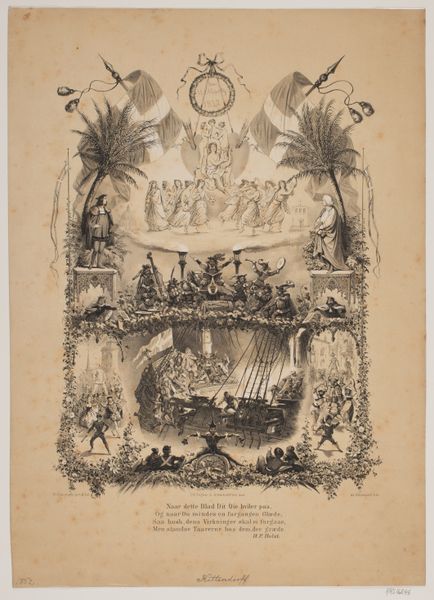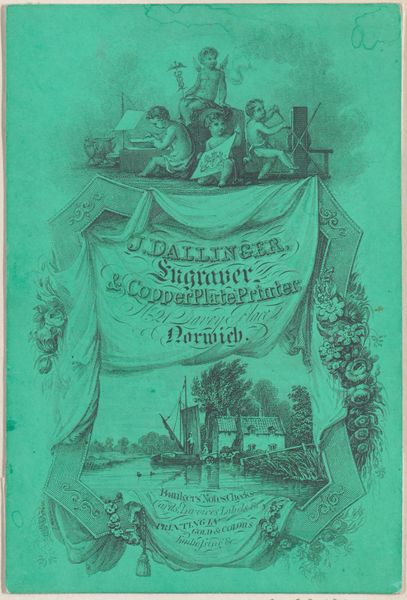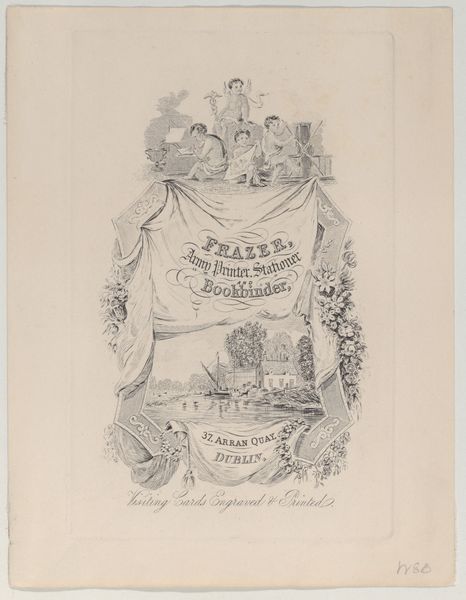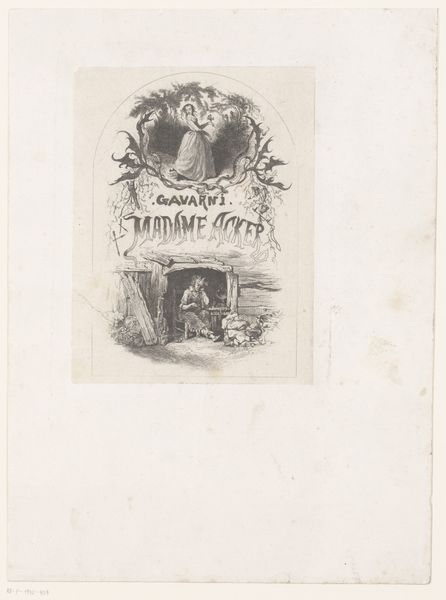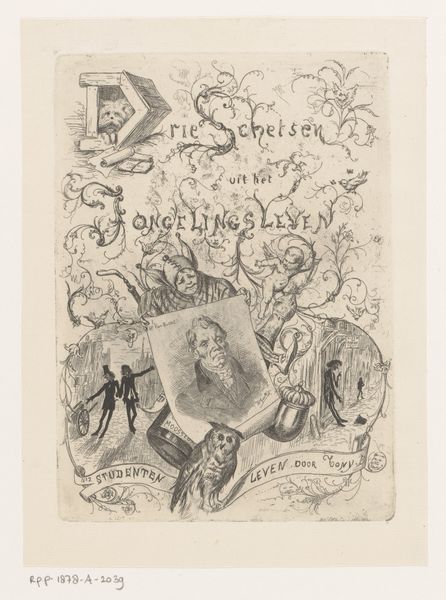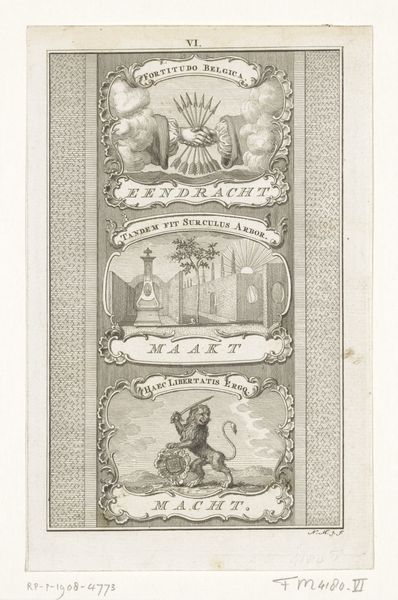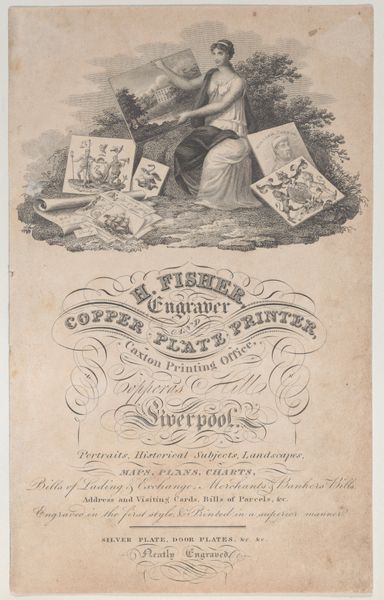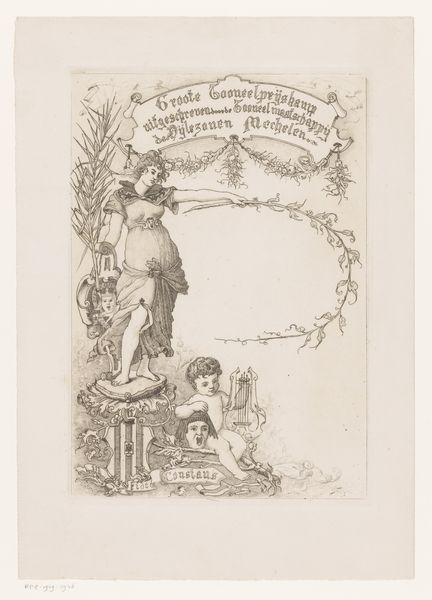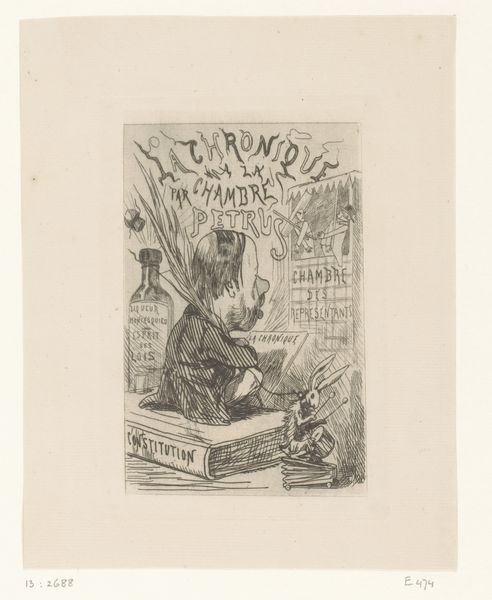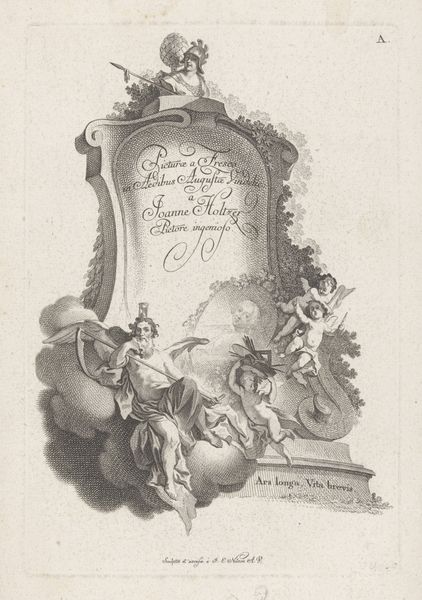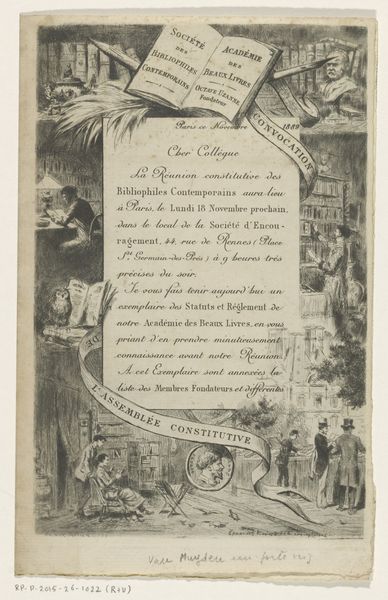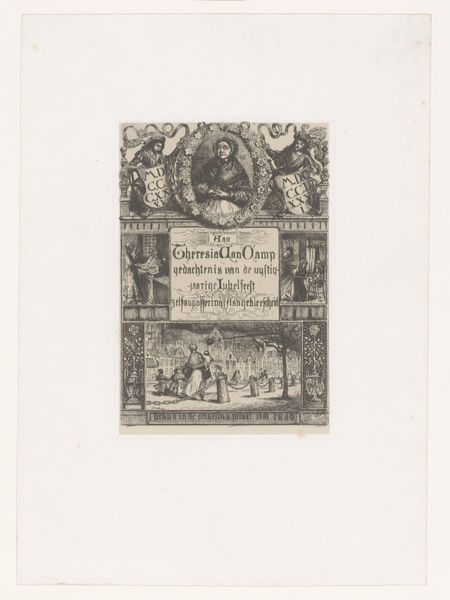
Diverse illustraties uit het leven Tijl Uilenspiegel, rondom een portret van Uilenspiegel 1869
0:00
0:00
graphic-art, print, etching, engraving
#
graphic-art
#
narrative-art
#
ink paper printed
# print
#
etching
#
pencil sketch
#
old engraving style
#
history-painting
#
engraving
Dimensions: height 258 mm, width 187 mm
Copyright: Rijks Museum: Open Domain
Editor: This is an engraving from 1869, "Diverse Illustrations from the Life of Tijl Uilenspiegel, Around a Portrait of Uilenspiegel," by Alfred Hubert. The scene is just incredibly dense. How would you approach understanding a piece like this, that clearly references historical narratives? Curator: Well, looking at this image, I see a distinct connection to the cultural revival of folk tales and national identity in 19th-century Europe. Consider the subject: Till Eulenspiegel. This trickster figure was enjoying renewed popularity, representing a kind of resistance against authority. Notice how Hubert surrounds the central portrait with vignettes. What do those scenes suggest to you? Editor: I see a lot of playful chaos – almost rebellious moments, figures caught mid-action. Does this reflect a particular political sentiment of the time? Curator: Precisely. The artist, and likely the intended audience, saw in Eulenspiegel a reflection of their own aspirations for autonomy, especially within the context of burgeoning nation-states and social change. These images offered a romanticised vision of social rebellion and popular culture that challenged dominant societal norms. Do you notice anything about how the figures are portrayed in terms of class or social standing? Editor: It's interesting, because they seem to be common folk engaged in everyday activities, elevated almost to the status of myth through the print medium. Curator: Exactly. Print culture played a vital role in democratizing imagery and disseminating these narratives, making art accessible to a wider audience and influencing public perception. Think about the role these prints played in shaping a shared cultural identity. Editor: That's a fascinating perspective. I always think of engravings as just being illustrative, but I see how they also were crucial to shaping ideas about national identity and even political dissent! Curator: Indeed, considering art in this way opens a wider understanding of social and political change. This helps me reflect on art's role as an influencer of history.
Comments
No comments
Be the first to comment and join the conversation on the ultimate creative platform.
